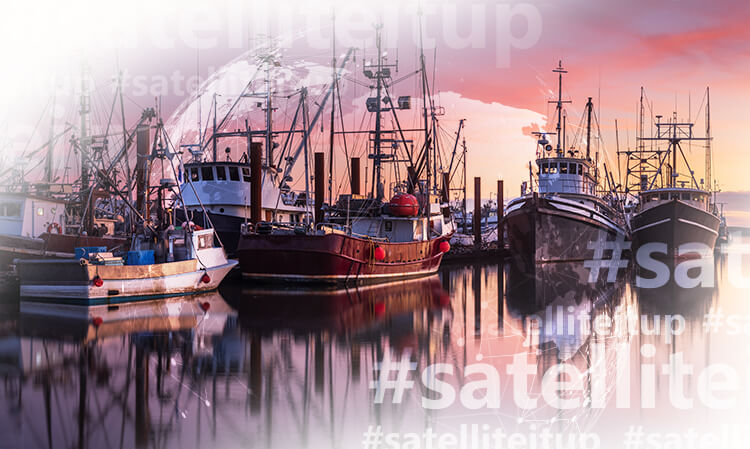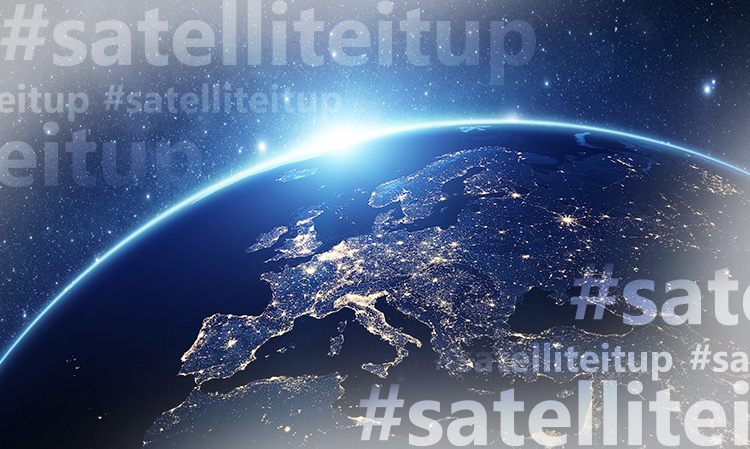With a 4.6 million vessels strong global fishing fleet and 260 million people directly depending on the fishing sector for their livelihood, there has been an increased movement towards sustainability, crew welfare, and compliance activities across several countries.
While large vessels are equipped with multiple channels of communication, including circuit-switch terminals and VoIP applications powered by VSAT, smaller vessels, like those used in the fishing industry, are hardly reachable. Compounded by the recent pandemic restrictions, there has also been a significant impact on demand for marine products that has caused vessel owners to seek new ways to optimise their operations. On the other hand, governments are increasingly committed to ensuring improved safety processes for the crew and better working conditions onboard smaller vessels.
Scalable Satellite Communication Solutions
Small vessels, usually, do not have the budget or space for a costly satellite set-up. However, maritime satellite communication providers are working closely with vessel operators to deliver integrated and scalable satellite communication solutions for operational use and crew welfare.
Ship-to-shore communications have been permanently transformed with digitalisation. Today, it is possible to receive accurate real-time meteorological updates, enable smart applications for fish catch reporting, and communicate instructions from shore to reduce labour hours as well as fuel consumption, leading to greater efficiency and cost savings. Moreover, dedicated onboard connectivity ensures improved safety for the crew, precise coordination of their work, and better working conditions onboard small and mid-sized vessels where maritime professionals are often exposed to greater risk.
The Spanish Scenario
Spain employs the largest number of people in the fishing sector in the EU, i.e. 38,000 in 2019, and is renowned as a leading producer of fishing products. With over 200 fishermen’s associations, Spain is also heavily committed to innovations in maritime communications, and alongside Poland, Germany, and the UK, Spain is one of the leading countries in the European maritime satellite communication market. The Spanish port of Vigo alone generates 6,000 direct jobs and is home to 357 local fishing companies that turn over €3,000 million every year.
The recent rising trend in fuel prices – a whopping 200% increase in a year from 40 cents a litre to 1.20 euros a litre – and the calls for emergency measures to ensure the sustainability of the EU fishing sector led to a request to moor the entire Spanish fleet in March 2022 until an agreement could be reached by the Executive Committee and the Permanent Commission of the National Federation of Fishermen’s Guilds to lower the cost of fuel, electricity, and gas. Satellite communications solutions provider, IEC Telecom wants to empower the fishing industry to take advantage of the latest technological advances in satellite communications – a burgeoning sector with revenues projected at approximately $383.62 million by 2025 in Spain.
The state-of-the-art Iridium GMDSS network enables more fishing vessels to access life-saving and efficient sea-to-shore communications. Designed to work in extreme conditions at sea, Iridium GMDSS ensures reliable coverage to the Spanish fishing fleet through all seasons. Such satellite communications have had a special impact on the Spanish fishing sector with digitalisation of operations as well as improvements in social sustainability. Affordable satcom technology is now within reach of over 8,000 vessels in the Spanish fleet, 96% of which comprise of fishing vessels.
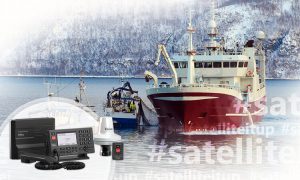
The Indonesian Iteration
Indonesia is considered one of the largest maritime markets in the ASEAN (South East Asia) region and its fisheries are of global importance, employing 12 million Indonesians. Availability of dependable connectivity onboard is key to operational efficiency. Innovative products such as Thuraya MarineStar serve as perfect assets in support of the growing demand for digitalisation across the region, having been designed keeping in mind the specific needs of small and mid-sized vessels.

With advanced catch reporting, tracking, and monitoring capabilities, Thuraya MarineStar empowers vessel operators to maintain regulatory compliance and supports sustainability goals. As a crew welfare solution, Thuraya MarineStar operates similar to a public phone with voice services accessible via scratch cards at a cost comparable to GSM tariffs.
Finally, Thuraya MarineStar is equipped with SOS alert functionality which enables one-touch and instant emergency connection, ensuring onboard safety services for everybody
The Mediterranean Milieu
Exceeding €11 billion in 2019, the Greek shipping industry has seen its fleet grow by over 4% and serves 20% of the global shipping capacity. Ship-owners are increasingly adopting digitalisation as satcom offers high-performance services that have noticeably decreased operational expenses by 20-30%. With increasing demand for cloud, 5G, big data, and digitalisation, the Greek data center market is expected to grow at a CAGR of 5.6% during 2022-2027 and the VSAT maritime satcom market is expected to garner $2.96 billion by 2030.
In fact, smaller vessels have been increasingly adopting VSAT as a result of compact antenna sizes, lower Ka-band service costs, and high-performance broadband in the harshest weather conditions. Fleet Xpress is a perfect VSAT solution that delivers a high-speed satellite network enabled by a combination of Inmarsat’s Global Xpress Ka-Band technology and the proven reliability of FleetBroadband L-Band service. Purposely designed for mobility, customers experience seamless communications and the flexibility to meet seasonal demand changes: high bandwidth during peak demand and service standby off-season.
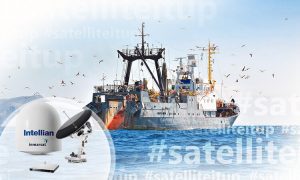
Dedicated connectivity ensures improved safety for the crew, precise coordination of their work, and better working conditions onboard vessels. The recent provisions for seafarers’ right to internet connectivity at sea, secured at the Maritime Labour Convention meeting in Geneva in May 2022, reflect the increasingly prominent role that crew welfare is playing in operational decision-making.
Maritime Digitalisation and Communications
As fishing vessels rely more and more on comms & reporting via specialised apps, availability of satcom onboard has become crucial. IEC Telecom provides a wealth of satellite connectivity options to suit a range of fishing vessel types – from large fleets who spend many months at sea to smaller boats making shorter trips.
Corporate communications received in time over satcom channels are supporting fishing operations and can help to optimise vessel routes, decrease fuel consumption, and avoid unnecessary port entries. Cutting-edge solutions like Orion Edge V offer optimised applications for videoconferencing, remote maintenance, and more for all vessel types. Besides providing full visibility over the network to the captain and crew, OneGate enables automated failover at least cost routing so that vessels can benefit from the most competitive communications link.
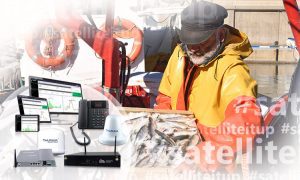
With such incredible advances in digital technologies and the immense benefits of onboard digitalisation, in both high and low bandwidth environments, fishing vessels can confidently navigate any environment at sea.
